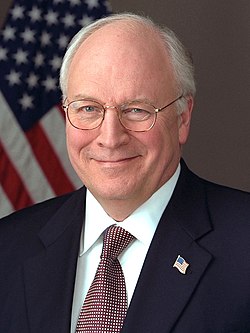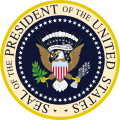| 111th United States Congress | |
|---|---|
110th ← → 112th | |
 United States Capitol (2009) | |
January 3, 2009 – January 3, 2011 | |
| Members | 100 senators 435 representatives 6 non-voting delegates |
| Senate majority | Democratic |
| Senate President | Dick Cheney (R) [a] (until January 20, 2009) Joe Biden (D) (from January 20, 2009) |
| House majority | Democratic |
| House Speaker | Nancy Pelosi (D) |
| Sessions | |
| 1st: January 6, 2009 – December 24, 2009 2nd: January 5, 2010 – December 22, 2010 | |











The 111th United States Congress was a meeting of the legislative branch of the United States federal government from January 3, 2009, until January 3, 2011. It began during the last weeks of the George W. Bush administration, with the remainder spanning the first two years of Barack Obama's presidency. It was composed of the Senate and the House of Representatives. The apportionment of seats in the House was based on the 2000 U.S. census. [1] [2] [3]
Contents
- Major events
- Major legislation
- Enacted
- Health care reform
- Proposed
- Treaties ratified
- Major nomination hearings
- Impeachments
- Party summary
- Senate
- House of Representatives
- Leadership
- Senate 2
- House of Representatives 2
- Members
- Senate 3
- House of Representatives 3
- Changes in membership
- Senate 4
- House of Representatives 4
- Committees
- Senate 5
- House of Representatives 5
- Joint committees
- Caucuses
- Employees
- Legislative branch agency directors
- Senate 6
- House of Representatives 6
- See also
- Elections
- Membership lists
- References
- Notes
- External links
In the November 2008 elections, the Democratic Party increased its majorities in both chambers (including – when factoring in the two Democratic caucusing independents – a brief filibuster-proof 60-40 supermajority in the Senate), and with Barack Obama being sworn in as president on January 20, 2009, this gave Democrats an overall federal government trifecta for the first time since the 103rd Congress in 1993.
However, the Senate supermajority only lasted for a period of 72 working days while the Senate was actually in session. A new delegate seat was created for the Northern Mariana Islands. [4] The 111th Congress had the most long-serving members in history: at the start of the 111th Congress, the average member of the House had served 10.3 years, while the average Senator had served 13.4 years. [5] The Democratic Party would not simultaneously control both the U.S. House of Representatives and the U.S. Senate again until more than a decade later, during the 117th Congress. After comprising the majority of the House of Representatives since the 106th United States Congress, the 111th United States Congress was the first where Baby boomers comprised the majority of the Senate. [6]
The 111th Congress was the most productive congress since the 89th Congress. [7] It enacted numerous significant pieces of legislation, including the Lilly Ledbetter Fair Pay Act, the American Recovery and Reinvestment Act, the Patient Protection and Affordable Care Act, the Dodd–Frank Wall Street Reform and Consumer Protection Act, and the New START treaty.



























